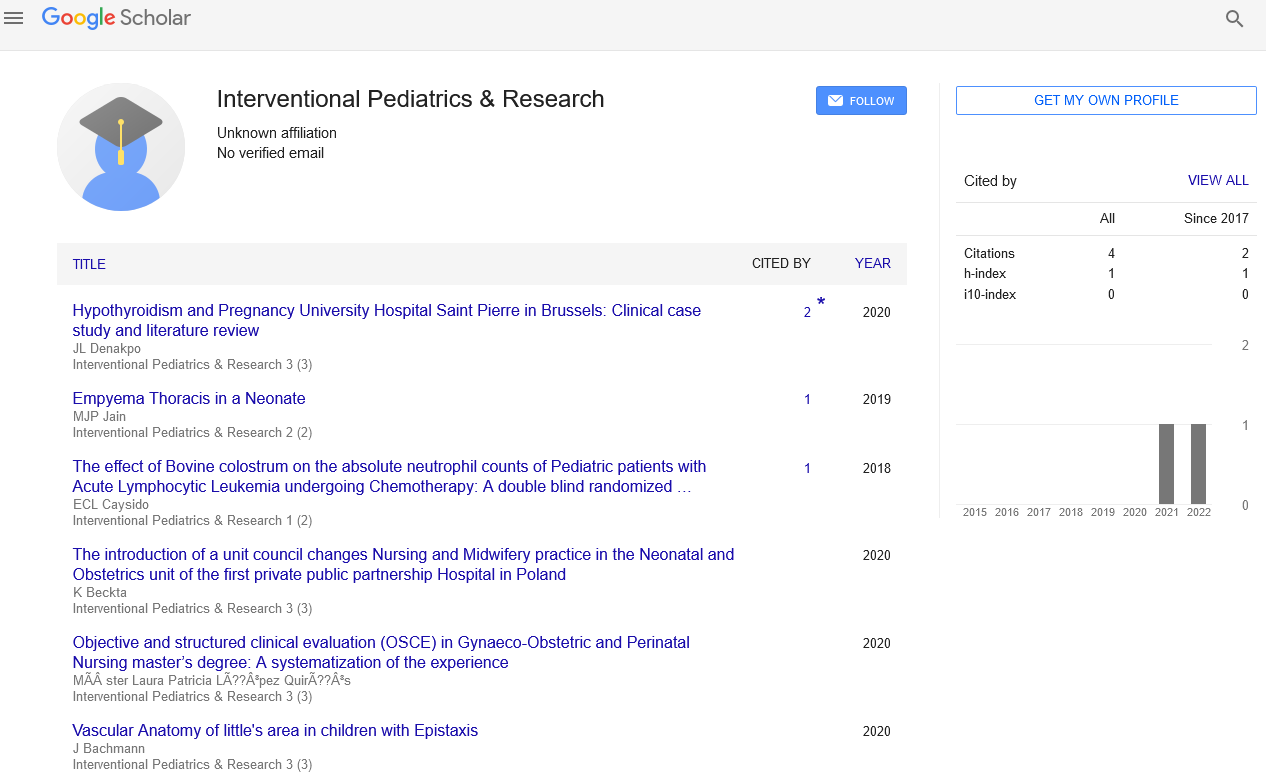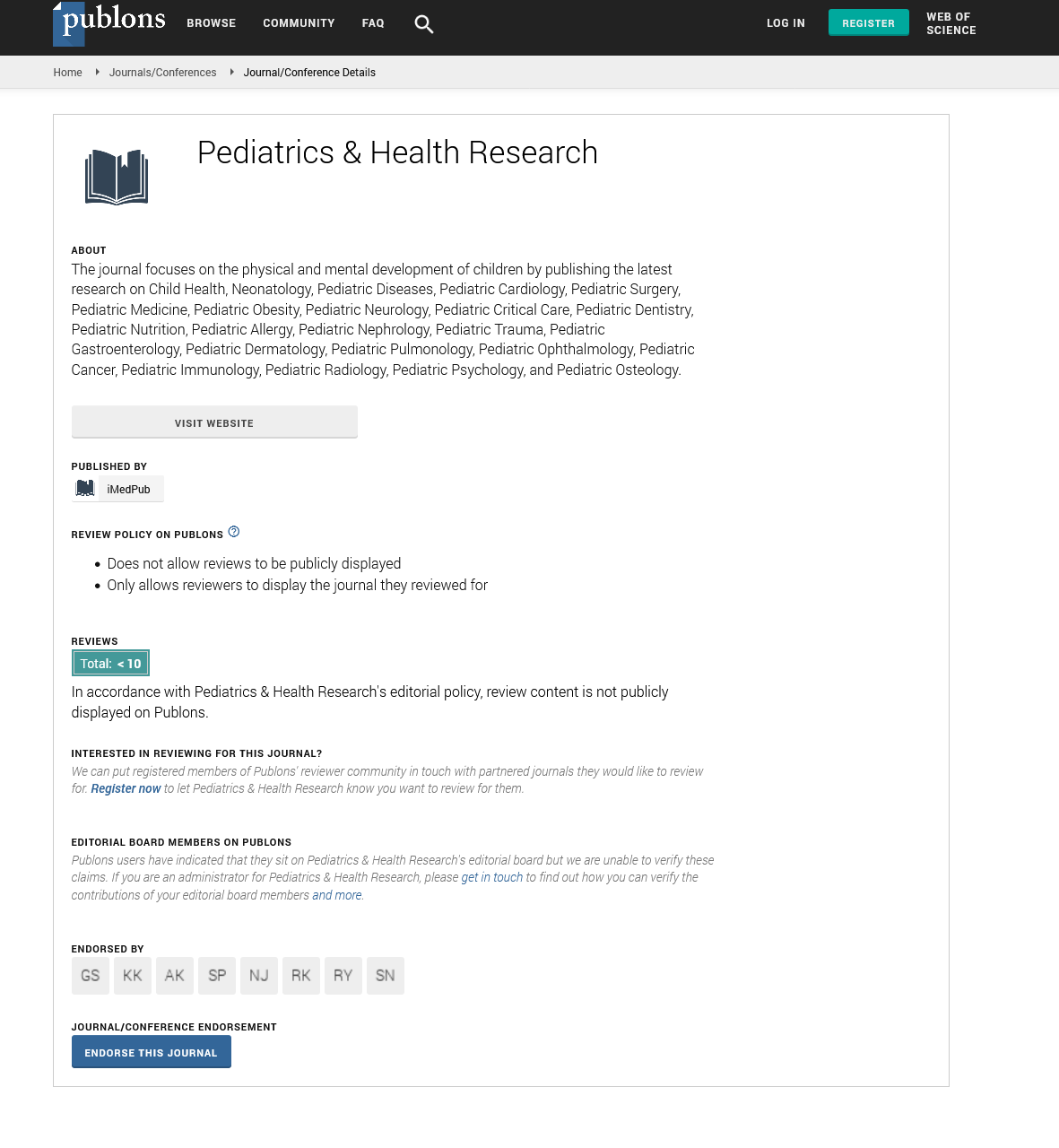Perspective - Interventional Pediatrics & Research (2023) Volume 6, Issue 3
Experimental Cluster Randomized Experiment to Lower Primary Care Pediatric Diagnosis Mistakes. Vision Testing in Preschool
- Corresponding Author:
- Andrea E Spencer
Department of Medicine, Northwestern University Feinberg School of Medicine, Chicago, Ethiopia
E-mail: andrea@ese.com
Received: 17-Dec-2023, Manuscript No. ipdr-23-83926; Editor assigned: 21-Dec-2023, Pre-QC No. ipdr-23-83926(PQ); Reviewed: 05-Jan-2023, QC No. ipdr-23-83926; Revised: 28-Mar-2023, Manuscript No. ipdr-23- 83926(R); Published: 04-Apr-2023, DOI: 10.37532/IPDR.2023.6(3).46-47
Abstract
Given the lack of information regarding the effectiveness of vision screening in primary care pediatrics, we assessed the effectiveness of pediatric based preschool vision screening. The substantial harm caused to children as a result of healthcare is largely attributed to diagnostic errors. Diagnostic errors are more common in primary care settings because of the high diagnostic uncertainty, lack of information, and time constraints. In this article, we discuss the planning and execution of project RedDE, a virtual quality improvement collaborative stepped wedge, cluster randomized controlled trial targeted at lowering diagnostic mistakes in pediatric primary care.
Keywords
Primary care • Pediatrics • Diagnostic errors • Substantial harm • Vision screening
Introduction
From May 2007 to July 2008, nine primary care pediatric practices tested children aged 3-5 years, and pediatricians and staff at those practices received vision screening training. Examinations in pediatric ophthalmology were recommended for children who failed tests or were deemed untestable. In addition to calculating the rates of testability, failure, referral, and completion of ophthalmologic exams, we also calculated the Positive Predictive Values (PPVs) of screening failure and untestability. In order to evaluate the simplicity and precision of preschool vision screening, we also surveyed practices.
Description
Pediatric primary care clinics were cluster randomized into one of three groups as part of project RedDE. The same three diagnostic errors missed diagnoses of high blood pressure and teenage depression and delayed diagnoses of aberrant laboratory studies were the focus of each group’s participation in quality improvement collaboration. Utilizing general quality improvement tactics provided during the intervention phase for each error, practises worked both independently and cooperatively throughout the quality improvement collaborative. The collaborative intervention for quality improvement comprised root cause analyses for repeated failures, team level mentoring for quality improvement and interactive learning sessions and webinars. Monthly pragmatic data were gathered, submitted to a central data aggregator, and returned to the practises as run charts comparing each practice’s development over time. The collective one. Secondary studies assessed the longevity of reported decreases in diagnostic errors after the intervention period ended. The primary study utilised patients as the unit of analysis and compared diagnostic error proportions between the intervention and baseline periods.
93 (3.2%) of the children who underwent screening for vision problems and 349 (11.9%) were deemed untestable. Among 3 years old, untestability was at its highest (27.1%). For children aged 3, 4 and 5, the PPVs for failing were 30.0%, 77.8%, and 87.5%, respectively. The PPV for failing any part of the vision test was 66.7%. Despite several follow-up attempts, only 38.7% of kids who failed the vision test had their eyes examined. Pediatricians gave screening 3 year’s old children a lower ease and accuracy rating than older children.
The diverse, national pediatric primary care practises that took part eventually supplied all of their data, with one exception. Participation in the quality improvement collaborative was high, with 85% of practises participating in learning sessions and an average of 63% of practises attending quality improvement collaboration webinars. Complete data comprised outcome data for the first diagnostic mistake corrected over a period of 30 months, the second over a period of 24 months, and the third over a period of 16 months.
Conclusion
For children aged 4 and 5, visual acuity based screening showed acceptable PPV for vision loss, but was less effective for children aged 3 years. Particularly among kids from low-income families, the completion rates of ophthalmologic examinations and referral rates were low. A broad, national collection of pediatric primary care practises was successfully attracted and retained by project RedDE, virtual quality improvement collaboration with the goal of lowering diagnostic errors in pediatric primary care. The cluster randomized, stepped wedge trial design allows for increased research productivity.
Acknowledgement
The author would like to acknowledge his Northwestern University Feinberg School of Medicine, Chicago, IL, Ethiopia for their support during this work.
Conflict of Interest
The author has no known conflicts of interested associated with this paper.


